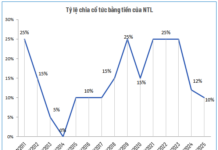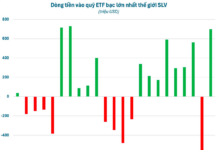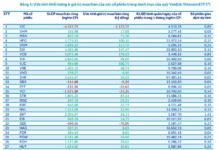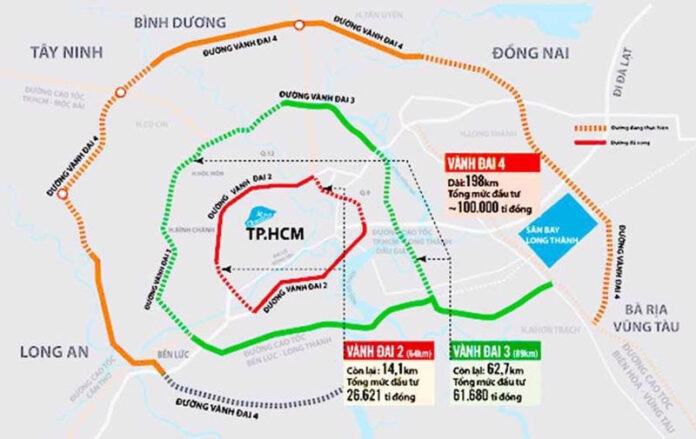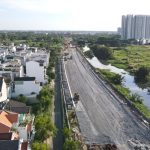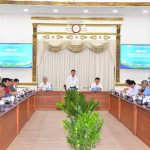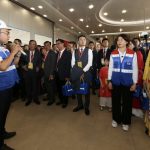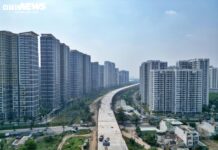The Ho Chi Minh City People’s Committee emphasizes the importance of Ring Road 4 in facilitating economic and social development in the Southeast region and the key economic zone of the South. It plays a crucial role in inter-regional connectivity, streamlining freight transportation, and reducing logistics costs. However, local authorities are facing challenges and obstacles in the process of studying and finalizing the necessary documentation.
To expedite the investment process for Ring Road 4, the Ho Chi Minh City People’s Committee has collaborated with the Ministry of Transport and the People’s Committees of Ba Ria-Vung Tau, Dong Nai, Binh Duong, and Long An provinces. They have agreed on the need to research and propose a unique mechanism and policy framework applicable to the entire Ring Road 4 route in Ho Chi Minh City, to be submitted to the competent authorities for approval.
Specifically, the local authorities proposed to the Prime Minister that the People’s Committees of the provincial level be assigned as the managing agencies. They also suggested utilizing local budgets and other legal capital sources to invest in the Ring Road 4 projects in Ho Chi Minh City. Additionally, they recommended using local budgets to support other localities in implementing public investment activities for the project spanning two localities (Thu Bien Bridge between Dong Nai and Binh Duong).
The central budget is proposed to support Binh Duong, Dong Nai, and Ba Ria-Vung Tau provinces with 50% of the total budgeted capital participation in the project. Meanwhile, Long An province has requested a higher level of support at 75%.

Ho Chi Minh City and the provinces also proposed to the Prime Minister that the proportion of state capital participating in the project should not exceed 70% of the total investment. They agreed on proposing a mechanism for exploiting common construction minerals and a management mechanism for the work after the investment and settlement of capital.
It is also proposed that the People’s Committees of Ba Ria-Vung Tau, Dong Nai, Binh Duong, and Long An provinces be allowed to approve local adjustments to the master plan for construction of functional areas, urban master plans, and specialized planning for technical infrastructure. This includes adjustments to master plans for construction of functional areas and urban areas, as well as sectoral planning for technical infrastructure, which have already been approved by the Prime Minister.
Regarding the investment plan for the medium term of 2026-2030, it is proposed that the total investment value of the Ring Road 4 projects in each locality should not be counted towards the total investment of programs and projects that need to be implemented in the subsequent medium-term public investment plans of each locality.
For the section of Ring Road 4 under the management of the People’s Committee of Long An province, it is proposed that the National Assembly authorize the Prime Minister to decide on the investment policy for the project.
The sequence, procedures, and authority for appraisal and investment decision-making for the component projects shall be similar to those for Group A projects, in accordance with the regulations on public investment for the section under the authority of Long An province.
Within two years from the adoption of the National Assembly’s resolution on Ring Road 4, the head of the competent authority is authorized to consider and decide on the application of direct contracting during the implementation of the project for consulting packages, packages serving the relocation of technical infrastructure, and packages for compensation, support, and resettlement. The procedure for implementing direct contracting shall comply with the provisions of the law on bidding.
Comprehensive regional connectivity
In addition to building strong physical infrastructure, Ho Chi Minh City needs to strengthen its soft connections with other provinces in the region in order to promote economic development. This includes prioritizing the training of skilled workforce and ensuring access to quality healthcare.












